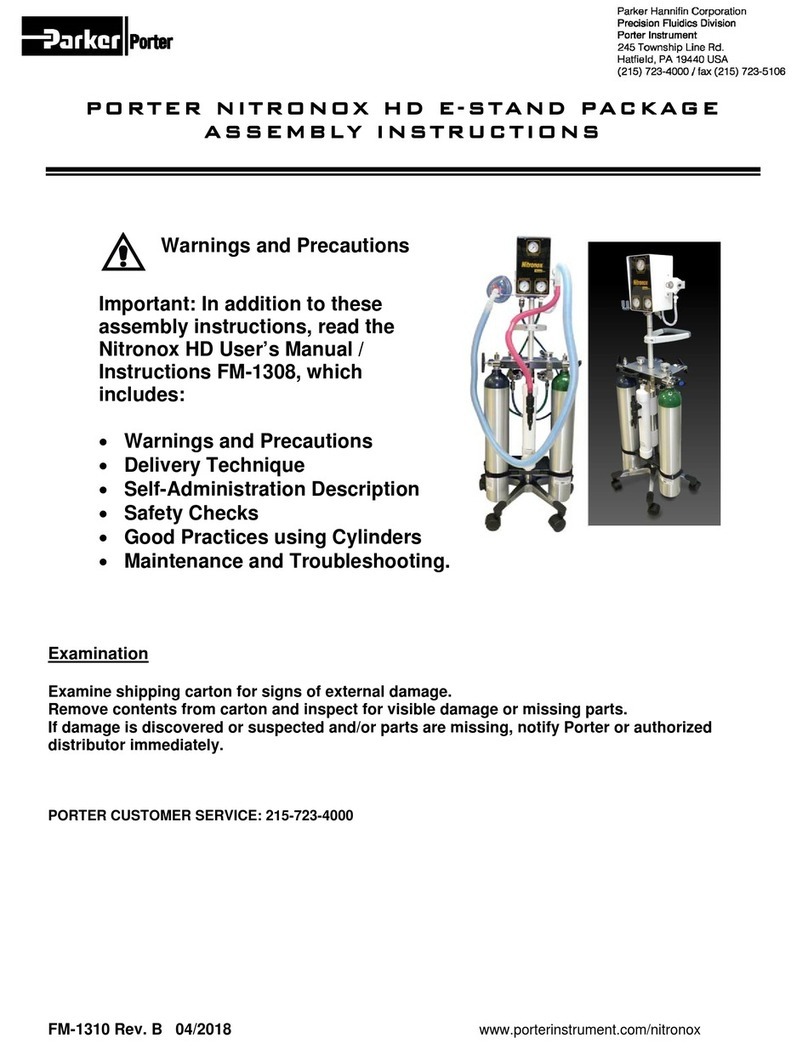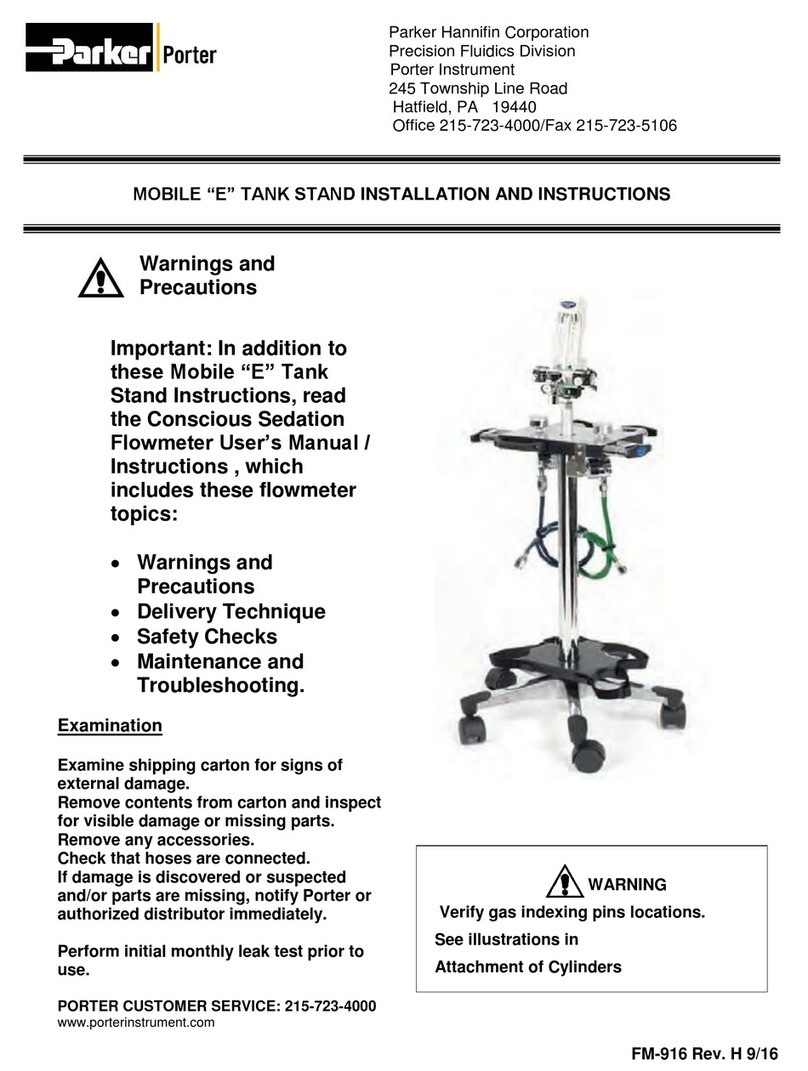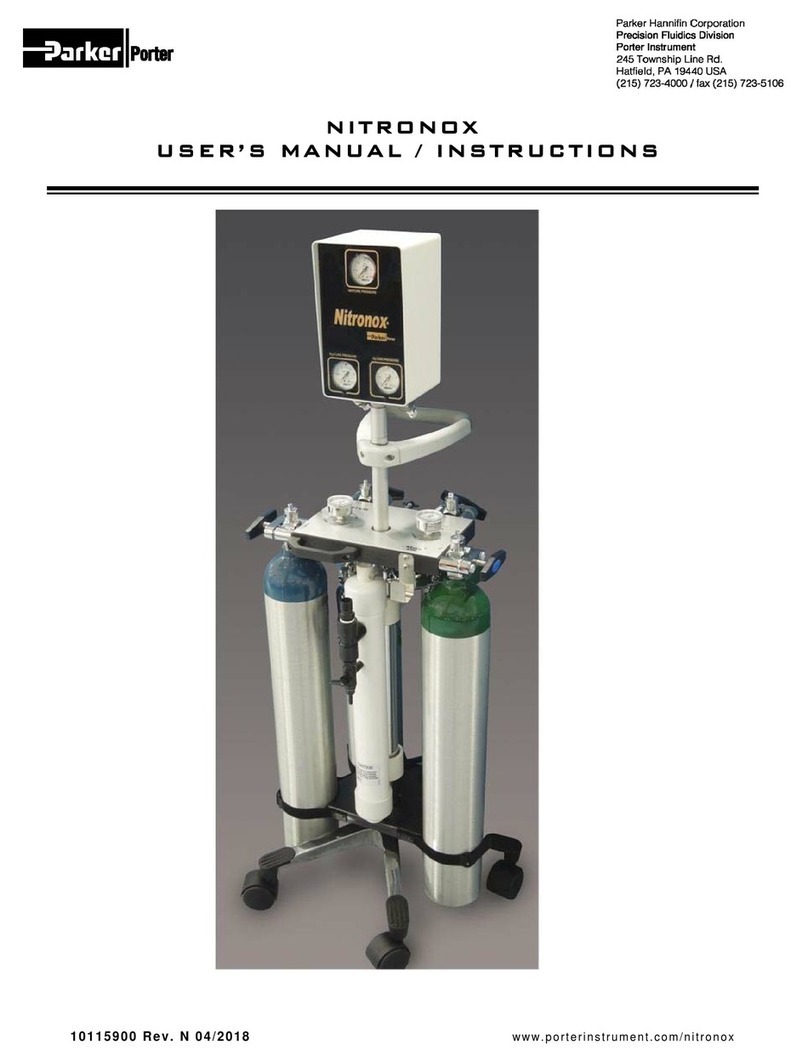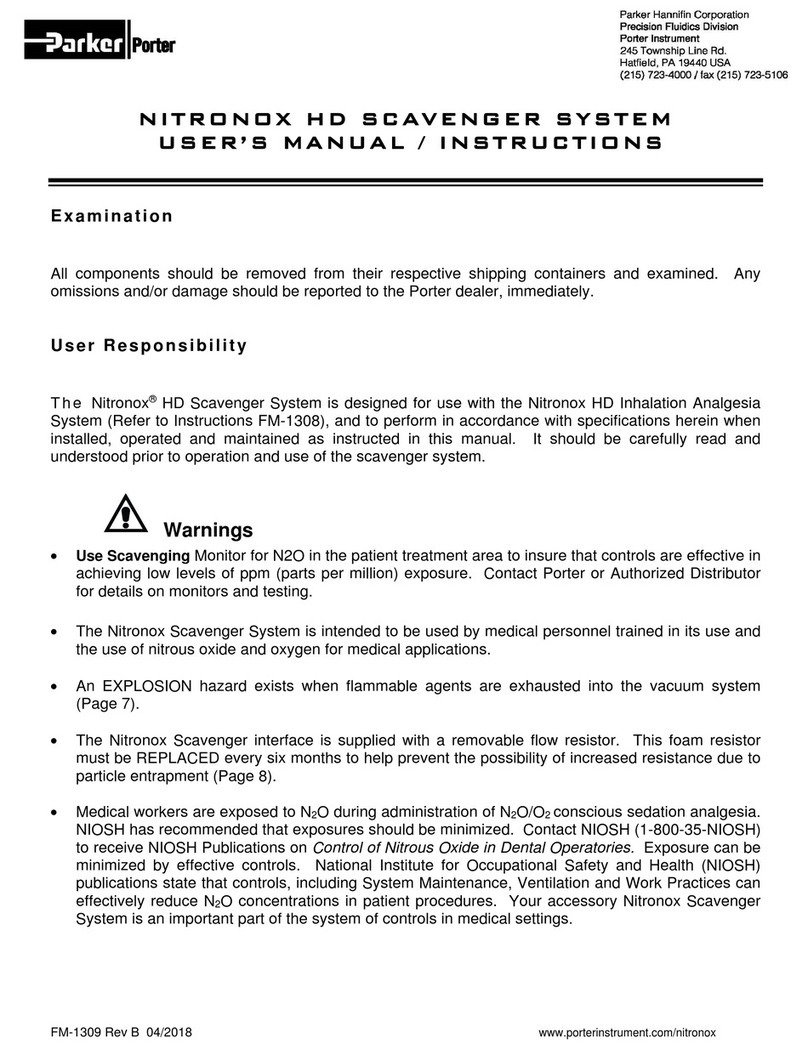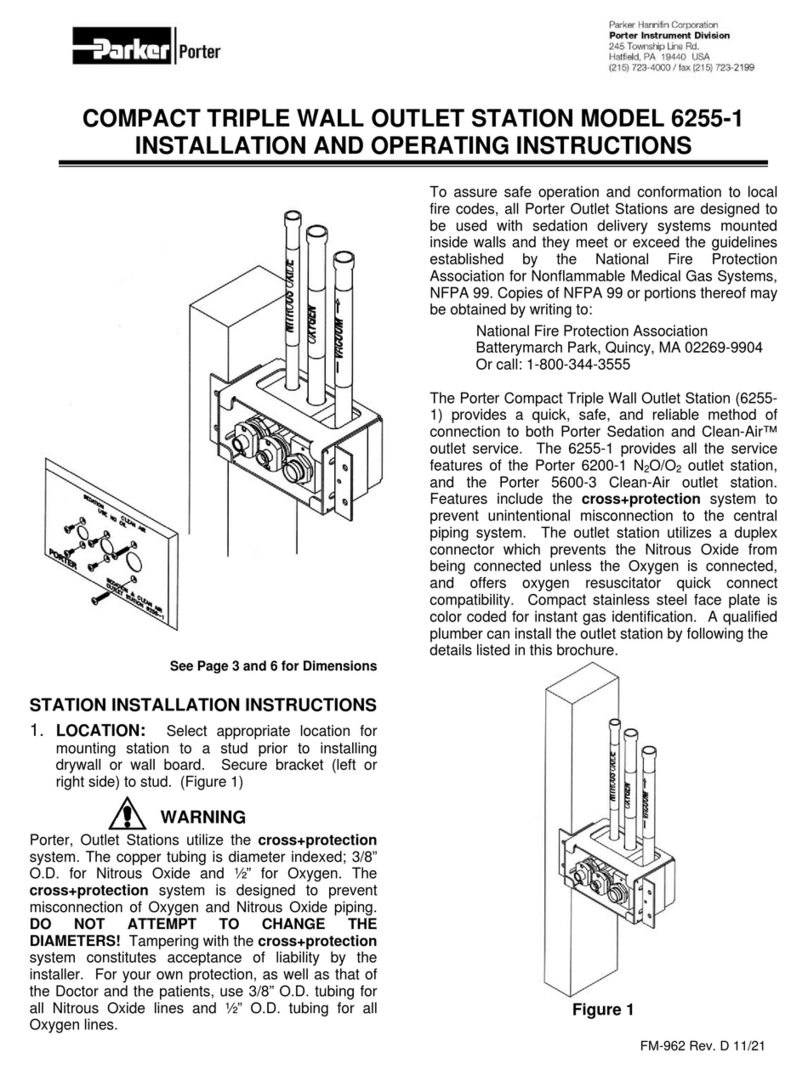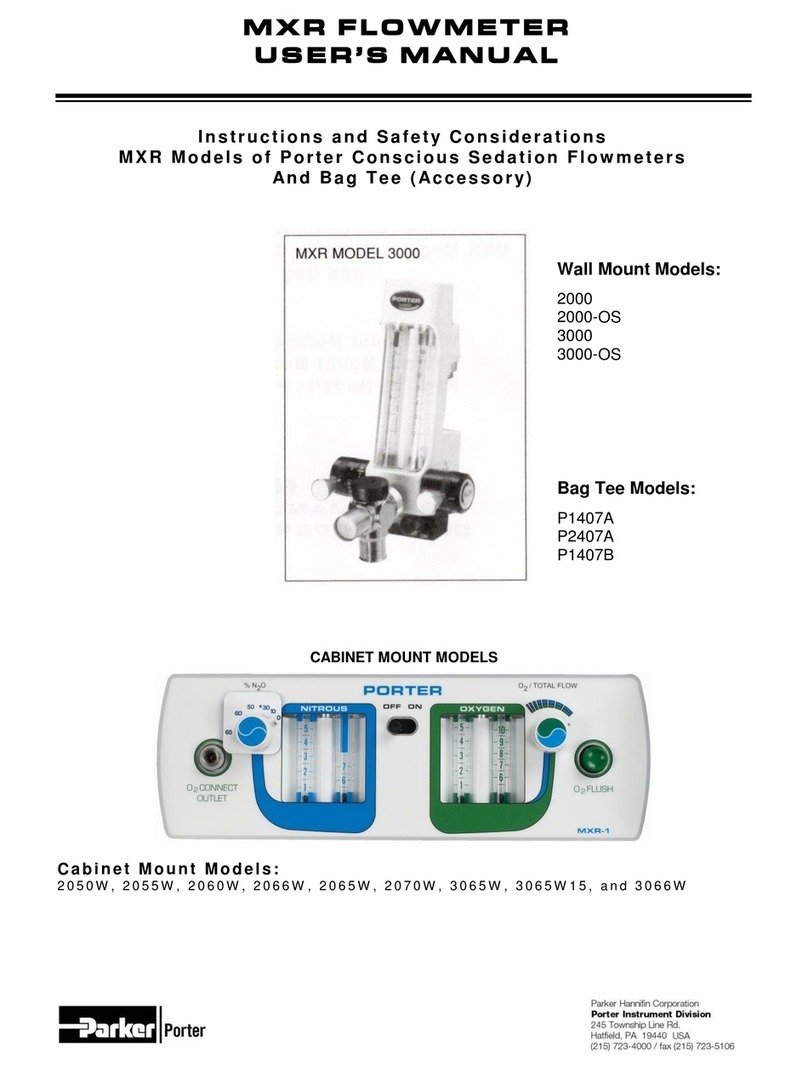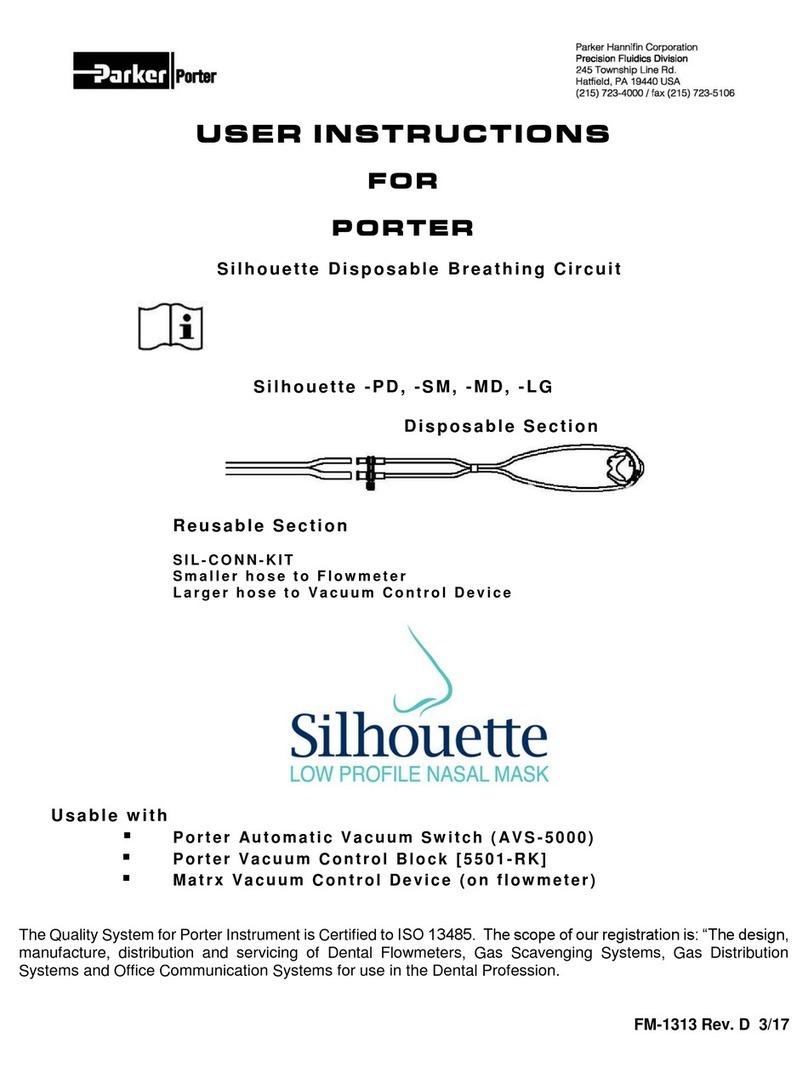
1
IMPORTANT:
READ MANUAL COMPLETELY BEFORE OPERATING THIS DEVICE
Basic delivery technique is described. Also, this manual contains instructions on periodically required checks
to be performed by the user. These checks are necessary to insure the proper performance of this device
and its safety features. Retain this manual for future reference.
WARNINGS AND PRECAUTIONS
These warnings and precautions are to help you
to understand how to safely operate the MXR
Flowmeter. A WARNING alerts you to a possible
hazard to people. A CAUTION alerts you to the
possibility of equipment damage.
WARNING: Do not use this device for the
administration of general anesthesia or as a part
of, or in conjunction with, a general anesthesia
administration system.
WARNING: Workers are exposed to N2O during
administration of N2O/O2 conscious sedation
analgesia. NIOSH has recommended that
exposures should be minimized. Contact NIOSH
(1-800-35-NIOSH) to receive NIOSH Publications
on Control of Nitrous Oxide in Dental Operatories.
Exposure can be minimized by effective controls.
National Institute for Occupational Safety and
Health (NIOSH) publications state that controls,
including System Maintenance, Ventilation and
Work Practices can effectively reduce N2O
concentrations in patient procedures. Your
flowmeter accessory Porter scavenger system is
an important part of the system of controls.
WARNING: Porter Instrument equipment utilizes
the cross+protection system. The flexible hose
and connectors that connect to the flowmeter are
diameter indexed; 3/8” O.D. for Nitrous Oxide and
½” for Oxygen. The cross+protection system is
designed to prevent misconnection of Oxygen
and Nitrous Oxide piping. DO NOT ATTEMPT
TO CHANGE THE DIAMETERS OR
CONNECTORS OF THE FLOWMETER!
Tampering with the cross+protection system
constitutes acceptance of liability by the installer.
For your own protection, as well as that of the
Doctor and the patients, use 3/8” O.D. tubing for
all Nitrous Oxide lines and ½” O.D. tubing for all
Oxygen lines.
To assure safe operation and conformation to
local fire codes, all Porter Instrument flowmeter
systems are designed to be used with sedation
delivery systems mounted inside walls and they
meet or exceed the guidelines established by the
National Fire Protection Association for
Nonflammable Medical Gas Systems, NFPA 99.
Copies of NFPA 99 or portions thereof may be
obtained by writing to: National Fire Protection
Association, Batterymarch Park, Quincy, MA
02269-9904; or call 1-800-344-3555
WARNING: New or modified installations -
properly connected gas pipelines are
absolutely essential to patient safety. The
authorized distributor or contractor should provide
written documentation that all gas pipelines are
connected properly and that the system has been
pressure tested prior to use. While this is a good
business practice, it is important that the user
verify by their own test, independent of the
authorized distributor or contractor, that all gas
pipelines are connected correctly prior to using
the system. The ultimate responsibility of
assuring that lines are not crossed rests with
the user.
WARNING: During any power outage, remember
to turn OFF the flowmeter and manually turn OFF
the tank valves. With centralized, electrically
powered gas systems, if gas was flowing when
the power went out and the flowmeter is left ON,
gas will be flowing when the power is restored.
CAUTION: This device is for use by or on the
order of a physician, dentist or licensed
healthcare professional.
CAUTION: Always use clean, dry medical grade
gases. Introduction of moisture or other
contaminants into this device may result in
defective operation.
CAUTION: Do not attempt to repair, alter or
calibrate this device. Unauthorized repair,
alteration or misuse of this device is likely to
adversely affect the performance and will void the
warranty.
CAUTION: Never oil or grease any part of this
system (minimize fire or explosion potential).
